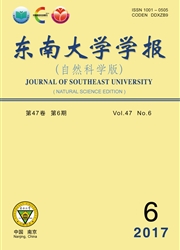

 中文摘要:
中文摘要:
为了解决在多传感器信息融合处理故障诊断过程中,传统证据理论对含有冲突证据的处理结果与实际相悖的问题,介绍了传统D—S证据理论的基本构架,分析了其在处理含有高冲突的证据融合过程中将高信任度分配给小可能故障源的不足,提出了一种新的基于模糊成员函数和证据平均距离的证据调整方法,该模糊成员函数充分考虑了专家知识对基本概率分配函数的影响,证据的平均距离给证据分配的权重系数可降低冲突证据的可信度,增加其未知程度.运用证据的充分性系数及利用证据平均距离得到的证据重要性系数,重新分配概率指派函数.实验结果表明,改进后的方法可以提高故障诊断结果的准确性,在一定程度上提高了诊断系统的性能.
 英文摘要:
英文摘要:
In order to solve the problem that it is inconsistent with the facts when the conventional evidence theory is used to deal with evidences of high conflict in the multi-sensor information fusion fault diagnosis system. This paper introduces the basic framework of the Dempster-Shafer (D-S) evidence theory and analyzes shortcomings of assigning high believe probability to fault source of small possibility in the course of dealing with fusion of evidences of high conflict using the D-S evidence theory. A new method based on the fuzzy membership function and the evidence average distance is proposed. The fuzzy membership function fully considers the influence of expert knowledge to basic probability assignments and the importance index to evidences assigned by the evidence average distance can lower believe possibility of conflict evidences and increase its uncertain possibility. Reallocate the basic probability assignments by combining the evidence sufficiency index and the importance index from the evidence average distance. The experimental results show that the new method can improve the reliability and accuracy of fault diagnosis results and enhance the performance of the system.
 同期刊论文项目
同期刊论文项目
 同项目期刊论文
同项目期刊论文
 期刊信息
期刊信息
